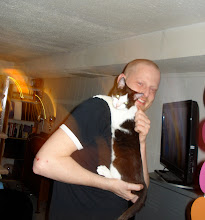Innovative technology to revolutionise management of images
Under Embargo until 15th November 2004
Grenoble, France - November 15, 2004. Scientists at Xerox Research Centre Europe (XRCE) have developed a system for the categorisation of generic digital images. The program, which effectively ‘recognises’ a photograph of a car, for example, and categorises it, will bring benefits to business applications such as document and content management systems, by allowing users to filter and search for images as well as words. In particular, this technology will bring advantages to customers who need to efficiently store and manage images and it will significantly extend web searching capabilities which are currently based upon text only.
Although there has been a phenomenal growth in the use of digital cameras and images, the use of technology to categorise image content is in its infancy, and is currently only used in applications such as face recognition in the security industry. However, in a breakthrough at XRCE, scientists have developed a generic technique for the identification of images, allowing the categorisation of multiple everyday image content types, such as buildings, animals, airplanes, books and faces. It is the first generic image categorization technology that is simultaneously robust, fast and simple to use.
“Images play a key role in most documents, but in the past document repositories have only been able to search for and categorise text,” says Christopher Dance, senior scientist, image processing, at Xerox Research Centre Europe. “We will be working with Xerox business groups to integrate this new system into Xerox’s document management offerings, making them pioneering products in this field, and providing Xerox customers with additional competitive advantage.”
This breakthrough is a result of fundamental research at XRCE, using Xerox scientists’ expertise in image processing, computer vision and machine learning. The technology works by ‘training’ a computer to map the key features of an object, known as patches, and to classify sets of these patches. This classification in effect assigns an image to a particular category or categories.
However, certain problems had to be overcome. For example, early versions of the system could confuse an image of a stack of tyres and an image of a car, as they both contain some of the same patches. In order to overcome this, the program examines key patches in the context of other areas of the picture. In this example therefore, a stack of tyres would not get confused with a car, because the machine would recognise that it missed other key patches, such as headlights or windows.
By being able to effectively recognise image content, a number of other services can subsequently be applied. For example, if the image recognized is that of a famous building, then the user could ask for more information about it to be automatically retrieved from the web.
Alongside developing this software for different applications, Xerox will continue to extend its categorizer to handle more visual categories and to incorporate difficult cases where the object of interest occupies only a small fraction of the field of view.
-ENDS-
About Xerox Research Centre Europe
Xerox Research Centre Europe (XRCE) guides Xerox research activities in Europe. The centre coordinates research, engineering and the TeXnology Showroom, a customer showcase for Xerox research and a technology exchange forum. The centre is also in charge of developing connections within the wider European scientific community through collaborative projects and partnerships. XRCE creates innovative document technologies for the Xerox office and global solutions and services businesses.
The group focuses on services that help people access and share documents and knowledge, regardless of device, format, platform or language, from the desktop or at a distance. R&D competencies lie in content analysis (natural language), machine learning, document structures, image processing and work practices. XRCE research programs combine results from several research threads to transfer technology applications to the Xerox business groups. Current programs include Office Applications, Work Practice Services and Document Content & Structure.
About Xerox Europe
Xerox Europe, the European operations of Xerox Corporation, markets a comprehensive range of Xerox products, solutions and services, as well as associated supplies and software. Its offerings are focused on three main areas: offices from small to large, production print and graphic arts environments, and services that include consulting, systems design and management, and document outsourcing.
Xerox Europe also has manufacturing and logistics operations in Ireland, the UK and Holland and a research and development facility (Xerox Research Centre Europe) in Grenoble, France. For more information, visit www.xerox.com.
Xerox® is a trademark of Xerox Corporation. All non-Xerox brands and product names are trademarks or registered trademarks of their respective companies.



